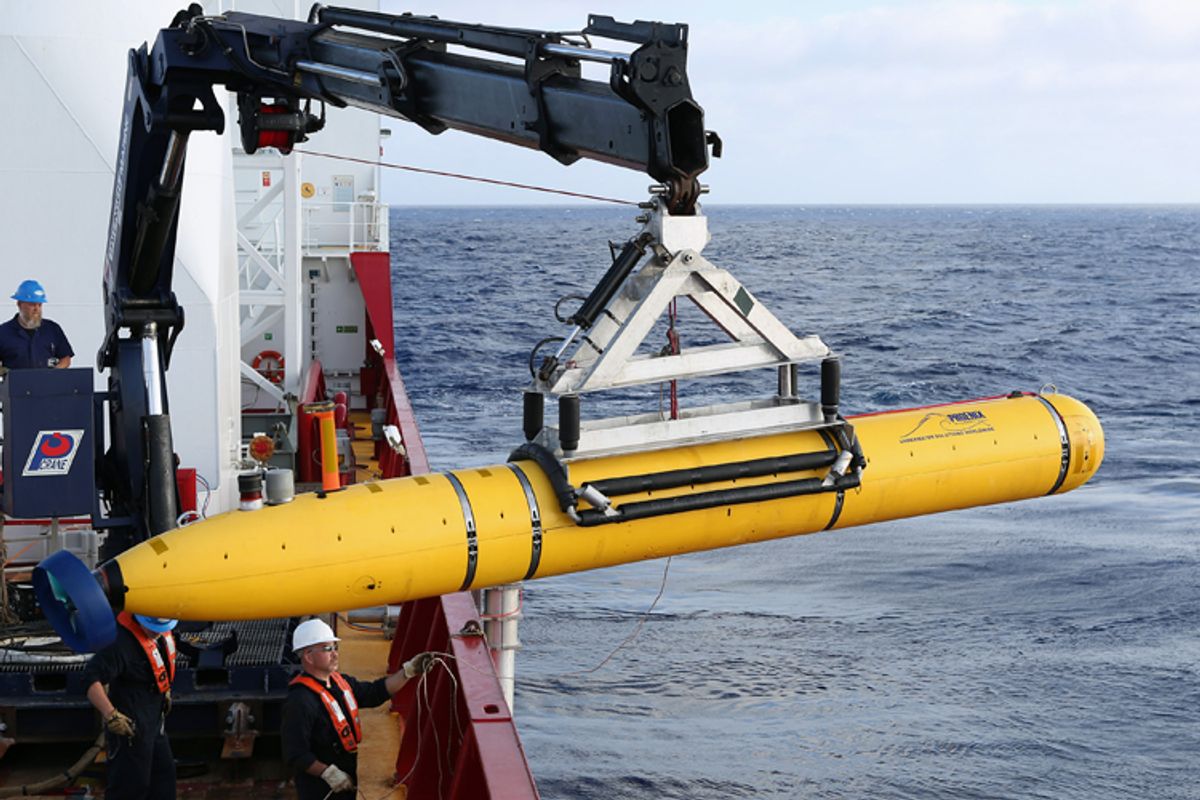After two failed attempts, U.S. Navy Bluefin-21 finally completed its 16-hour deep-sea mission. The autonomous underwater vehicle is being used by the multinational search team to comb the Indian Ocean seabed for remains of missing Malaysia Airlines Flight MH370. The underwater drone first struggled with ocean floor depths beyond its capacity, and then encountered technical glitches before its successful deployment. The data from the 16-hour search has not been released yet.
According to the Joint Agency Coordination Center, Bluefin-21 has searched approximately 35 square miles of the narrowed search area. The AUV hovers around 150 feet above the seafloor and uses side-scan sonar to create a high-res 3-D map. If it detects an object of interest, the drone can then switch to "camera mode" and take images of the item. In contradiction to many previous reports, the Joint Agency Coordination Center stated that the AUV will not take six weeks to two months to search the area.
The AUV has also recently been cleared for depths beyond the original 2.8-mile maximum. "Additionally, Phoenix International, with the assistance of Bluefin, have assessed that there is a small but acceptable level of risk in operating the vehicle in depths in excess of 4,500 metres (2.8 miles)," the Joint Agency Coordination Center said in a release.
The search area is located roughly 1,240 miles northwest of Perth, according to Reuters. It was significantly narrowed after last week's detection of four "pings" that may have been coming from the missing plane's black box. Prior to the use of Bluefin-21, searchers were utilizing a U.S. Navy black box detector towed by the Australian ship Ocean Shield.
The black box has two recorders, one for data and the other for voices from the cockpit. Each recorder is furnished with a beacon that gives off a 37.5 kilohertz signal once it comes in contact with water. Unfortunately the beacons only have a battery life of 30 days. The search is now in its 41st day: Investigators stopped using the "ping" detector, and believe that the batteries may have given way.
Currently, hope is being pinned on the Bluefin-21. The AUV's missions are each around 24 hours long: two hours to deploy to the bottom of the sea, 16 hours to search, two hours to resurface and four hours to download data.
Other leads, such as an oil slick detected by the Ocean Shield, have turned up cold. The half-gallon sample taken on Sunday, arrived in Perth, was tested and found not to be jetliner fuel.
Retired Air Chief Marshal Angus Houston, who is heading up the joint search, also said that the search for floating debris would likely end in three days.
Additionally, according to Reuters:
"Australian Prime Minister Tony Abbott was quoted by the Wall Street Journal on Wednesday as saying that 'we believe that (underwater) search will be completed within a week or so. If we don't find wreckage, we stop, we regroup, we reconsider.'"
His office clarified to Reuters that this did not mean the search was off, but rather the search area could change.
After 41 days of searching, no debris from the missing plane has been found. The Malaysia Airlines flight, and 239 people on board, went missing on March 8. The Boeing 777 was making a routine flight from Kuala Lumpur to Beijing when its transponders went dead and the plane was rerouted west. After sophisticated satellite analysis it was determined that the flight ended in the Indian Ocean. It is still unclear why the transponders shut down, and why the plane diverted its course.

Shares